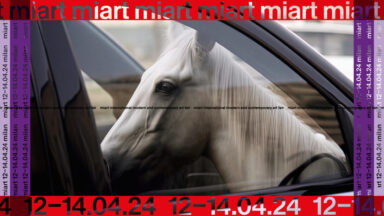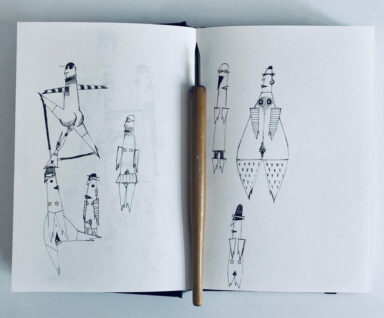LIV FONTAINE DESCRIBES WOMEN’S CONDITION IN SOCIETY AS A ‘ORGY OF DEPRAVITY’ – RICHARD SALTOUN’S EXHIBITION SHOWS HER DESPERATE DRAWINGS AS THERAPEUTIC ART
Text by Fiammetta Cesana
“A bookcase dripping with glamour and scandal (I notice titles like ‘Murderous Women’ alongside Madonna and Dolly Parton biographies); a wide range of Jesus statuettes and other kitsch religious paraphernalia. It’s a den so tacky and decadent it would make even the gaudiest Santa’s grotto look as drab as a prison cell.” Charles Alderwick wrote in 2011 for East London Lines after interviewing Liv Fontaine, then a 21-years-old art student, in her Carioca-like flat in Bethnal Green Road. If for many less is more, for Liv more was not even enough.
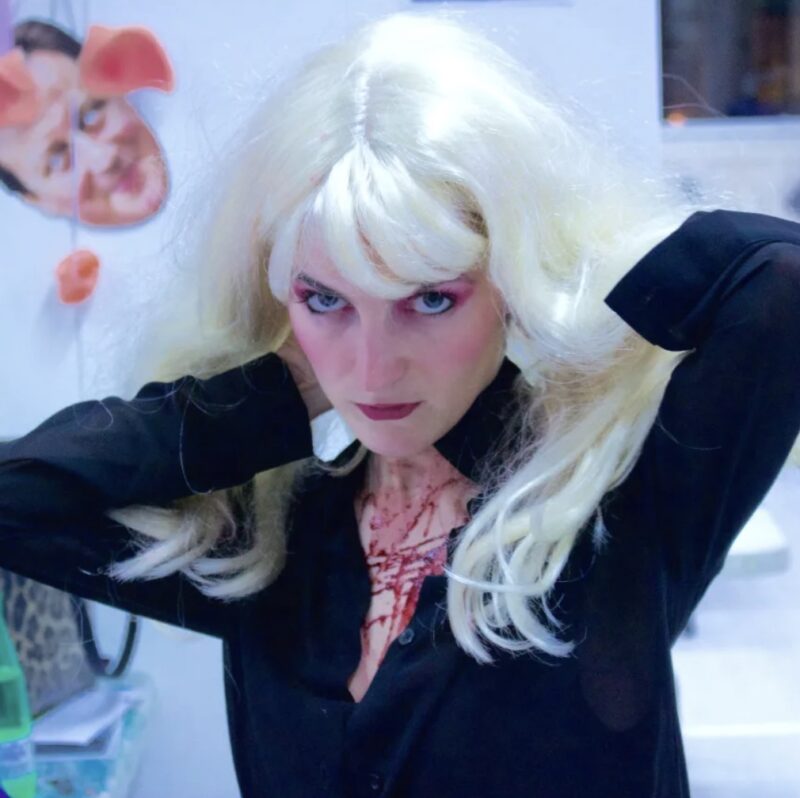
Over this decade, Liv Fontaine has struck her public with a manly performance-based artistic mission which hilariously tackles excruciating themes about women. Taking inspiration from early punk feminism’s language, Fontaine’s shows try to stir consciences on stereotypes and objectification that women are subject to in such a male-driven society which, in ten years, has yes made some progress but still forces women in 2021 to fight for their rights and gender equality. Liv Fontaine, so artistically baptized from a widely decorated Faberge egg, has long confronted these issues, also considering her own complicity, with hard-hitting live performances, including vulgar shouting on stage, sick-looking appearances, and surreal dialogues with the alter ego Viv Insane culminating with her transformation into a reptile.

Since 2018, after being diagnosed with an auto-immune disease, the artist has gone through a profound evolution of her art and of the relation with her own body and identity. She moved her heartbreaking form of self-expression from the stage to the paper with funny and very detailed drawings. The practice of drawing so becomes not only a way to continue her discourse of politics and sexuality, making art a shrieking activism, but also a therapy to process illness through fantasy and to adopt to her body’s changes.
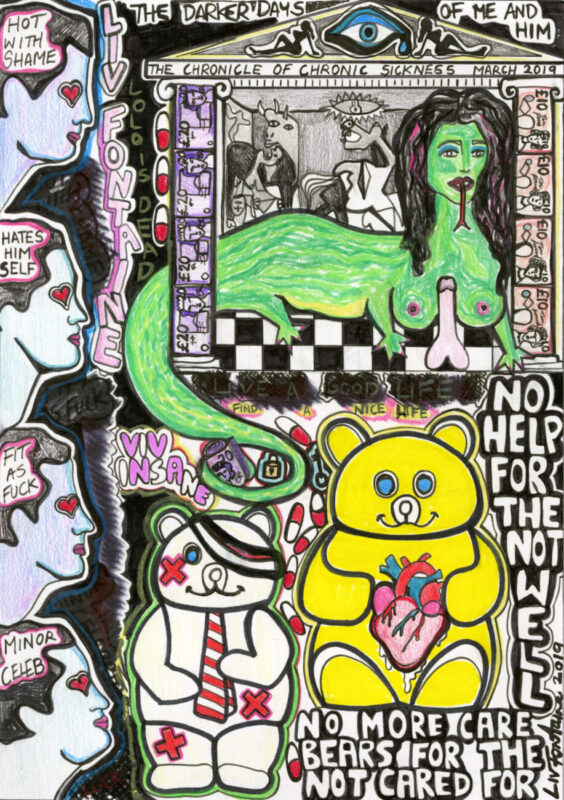
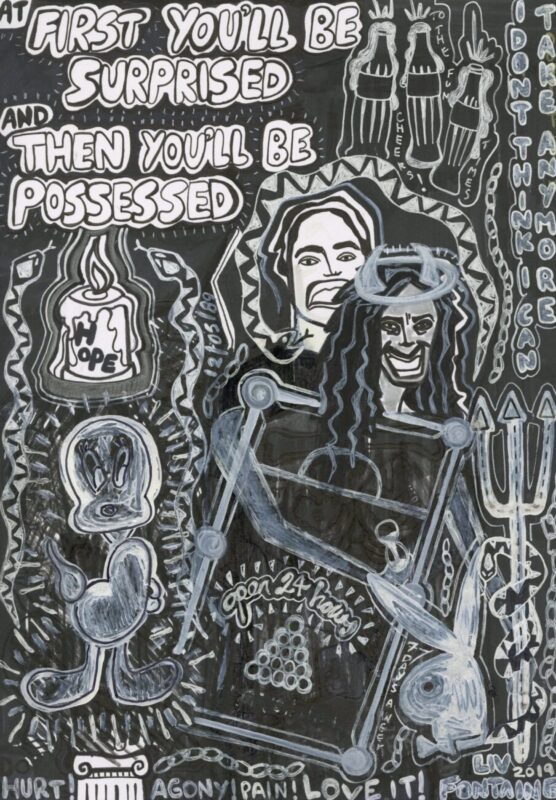
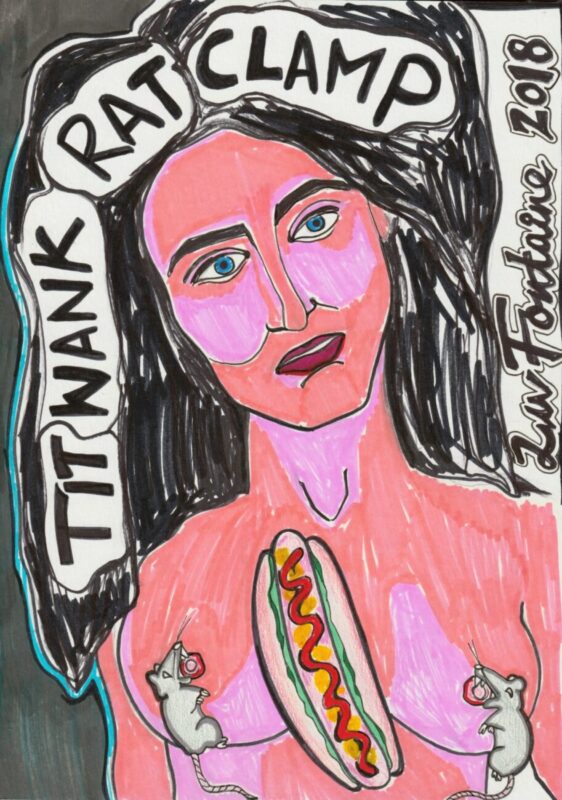
Liv Fontaine’s surrealist frame, acting on personal psycho-physical level but also carrying direct reflections on social realities, which she describes as “total orgy of depravity”, is still an outlet for contrasting forces which tells about the world of women through irony and violence, painful feelings and pleasure at the same time.
Today, at Richard Saltoun gallery in London, the ongoing exhibition “Hurt Agony Pain Love It“, as part of the virtual extended series Women 2.1, presents Fontaine’s operas as the powerful blend of both the artist’s and collective memories related to traumatic and relieving experiences. Her drawings turn into a surprisingly coherent narration coming from chaos, just like the dense, almost carnivalesque beauty of her old flat in London.
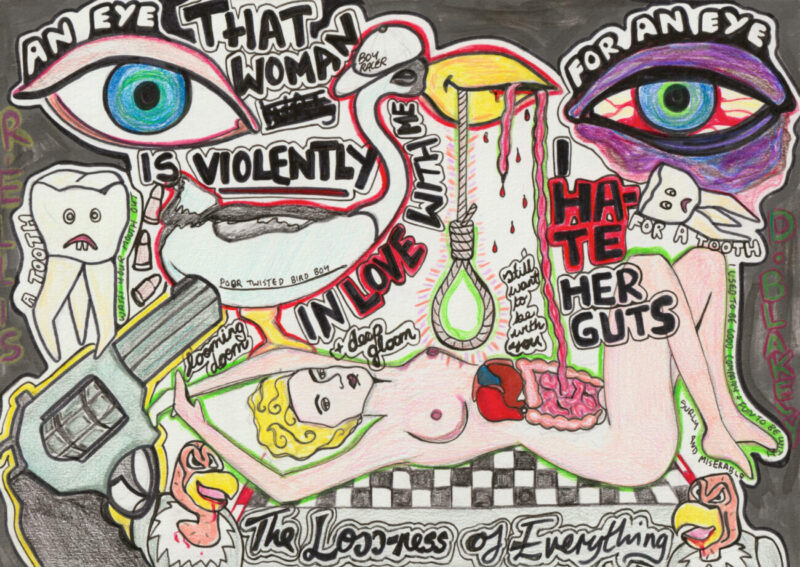
“Fontaine’s compulsive, titillating and densely detailed drawings take the viewer on a journey through her mind. Part diary, part fantasy and part information, they fixate on failed romantic relationships, her chronic sickness, therapeutic psychological theories, and the precarious political situation of our time. Largely based on readings from her performances, they continue her exploration into the concept of ‘the woman on the edge’ and themes of hysteria and wild desperation, which she believes is ‘the only adequate response to our society’ “.
– Róisín Mcqueirns, the exhibition’s curator
“Hurt Agony Pain Love It“
Richard Saltoun Gallery
London
Till February 27
